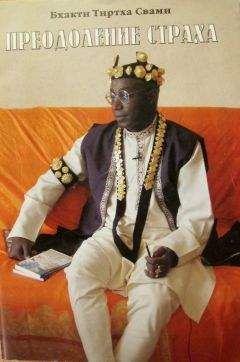Анна Анастази - Дифференциальная психология. Индивидуальные и групповые различия в поведении
Исследования изолированных групп, например, детей с канальных судов, из горных местностей и цыган, выявляют возрастное уменьшение среднего показателя коэффициента интеллекта. Такое падение отчасти может происходить от изменений в характере функций, проверяемых в разном возрасте, и отчасти из растущего воздействия депривации в окружающей среде.
Сельско-городские сравнения в Америке и других странах показали последовательное превосходство городских субъектов. В этом случае различия также склонны увеличиваться с возрастом. Анализы тестовых оценок штатов или других крупных регионов указывают на первостепенную важность социально-экономических факторов, особенно образовательных расходов. Что касается селективной миграции, некоторые данные позволяют предположить наличие тенденции к интеллектуальному превосходству среди взрослых, переселяющихся из сельских в городские районы, однако дети семей переселенцев не превосходят тех, кто остается в сельской местности. Кроме того, тестовые оценки детей переселенцев возрастают с продолжительностью пребывания в городском сообществе.
Интеллектуальные различия между социальными классами и между регионами проявляют специфичность относительно проверяемых функций. Каждая субкультура способствует развитию собственного характерного типа способностей и личностных черт. Поэтому тесты, созданные в пределах одной субкультуры, благоприятствуют воспитанным в ней индивидам. Ни один тест не измеряет «интеллект» или «личностную адаптацию» в абстрактном смысле, но любой тест надо толковать относительно подтверждающих его критериев.
БИБЛИОГРАФИЯ1. Alexander, H. В. A comparison of the ranks os American states in Army
Alpha and in social-economic status. Sch. and Soc, 1922, 16, 388–392.
2. Anastasi, Anne. Some implications of cultural factors for test construction.
Proc, 1949 Conf. Test. ProbL, Educ. Test. Serv., 1950, 13–17.
3. Anastasi, Anne, and Miller, Shirley. Adolescent prestige factors in relation
to academic and socio-economic variables. /. soc. Psychol., 1949, 29, 43–50.
4. Angelino, H., and Shedd, C. L. An initial report of a validation study of the
Davis-Eells Test of General Intelligence or Problem-Solving Ability. /. Psychol., 1955, 40, 35–38.
5. Asher, E. J. The inadequacy of current intelligence tests for testing Kentucky
mountain children. /. genet. Psychol., 1935, 46, 480–486.
6. Auld, F., Jr. Influence of social class on personality test responses. Psychol.
Bull., 1952, 49, 318–332.
7. Baldwin, В. Т., Fillmore, Eva A., and Hadley, L. Farm Children. N. J.:
Appleton-Century-Crofts, 1930.
8. Barker, R. G., and Wridht, H. F. One boy's day. N. Y.: Harper, 1951.
9. Barker, R. G., and Wright, H. F. Midwest and its children: the psychological
ecology of an American town. Evanston, 111.: Row, Peterson, 1955.
10. Bickersteth, V. E. Application of mental tests to children of various ages.
Brit. J. Psychol, 1917, 9, 23–73.
11. Britton, J. H. Influence of social class upon performance on the Draw-A-
Man Test. /. educ. Psychol, 1954, 45, 44–51.
12. Byrns, Ruth, and Henmon, V. A. C. Parental occupation and mwntal
ability. /. educ. Psychol, 1936, 27, 284–291.
13. Carlsson, G. The regional distribution of intelligence. Stat. Rev. (Sweden),
1954, 3, 313–323.
14. Carlsson, G. Social class, intelligence, and the verbal factor. Actapsychol,
1955, 11, 269–278.
15. Cattell, R. В. Occupational norms of intelligence, and the standardization
of an adult intelligence test. Brit. J. Psychol., 1934—35, 25, 1—28.
16. Centers, R. The psychology of social classes. Princeton, N. J.: Princeton
Univer. Press, 1949.
17. Centers, R. Children of the New Deal: social stratification and adolescent
attitudes. Int. J. Opin. Attitude Res., 1950, 4, 315–335.
18. Chapanis, A., and Williams, W. C. Results of a mental survey with the
Kuhlmann-Anderson intelligence tests in Williamson County, Tennessee. /. genet. Psychol., 1945, 67, 27–55.
19. Clark, R. E. Psychoses, income and occupational prestige. Amer. J. Sociol,
1949, 54, 433–440.
20. Davenport, K. S., and Remmers, H. H. Factors in state characteristics
related to average A-12 and V-12 test scores. J. educ. Psychol.,
1950, 41, 110–115.
21. Davis, A. American status systems and the socialization of the child. Amer.
social. Rev., 1941, 6, 345–354.
22. Davis, A. Socialization and adolescent personality. 43rd Yearb., Nat. Soc.
Stud. Educ, 1944, Part I, 198–216.
23. Davis, A., and Eells, K. Davis-Eells Games: Davis-Eells Test of General
Intelligence or Problem-Solving Ability, Manual. Yonkers-on-Hudson, N. Y.: Worid Book Co., 1953.
24. Davis, A., Gardner, В. В., and Gardner, Mary R. Deep South: a social
anthropological study of caste and class. Chicago: Univer. Chicago Press, 1941.
25. Davis, A., and Havighurst, R. J. Social class and color differences in child
rearing. Amer. sociol. Rev., 1946, 11, 698–710.
26. Dubnoff, Belle. A comparative study of mental development in infancy. /.
genet. Psychol., 1938, 53, 67–73.
27. Duff, J. F., and Thomson, G. H. The social and geographical distribution
of intelligence in Northumberland. Brit. J. Psychol., 1923, 14, 192–198.
28. Edwards, A. S., and Jones, L. An experimental and field study of North Georgia
mountaineers. /. soc. Psychol., 1938, 9, 317–333.
29. Eells, K., Davis, A., Havighurst, R. J., Herrick, V. E., and Tyler, R. W.
Intelligence and cultural differences. Chicago: Univer. Chicago Press, 1951.
30. Foulds, G. A., and Raven, J. С Intellectual ability and occupational grade.
Occup. Psychol., bond., 1948, 22, 197–203.
31. Fryer, D. Occupational intelligence standards. Sch. and Soc, 1922, 16,
273-277.
32. Gee, W. and Corson, J. J. Rural depopulation in certain Tidewater and
Piedmont areas of Virginia. Univer. Virginia soc. Sci, Monogr., 1929, No. 3.
33. Geist, H. Evaluation of culture-free intelligence. Calif. J. educ. Res., 1954,
5, 209–214.
34. Gist, N. P., and Clark, С D. Intelligence as a selective factor in urban-
rural migration. Amer. J. Socioi, 1938, 44, 36–58.
35. Gordon, H. Mental and scholastic tests among retarded children. London:
Bd. Educ, Educ. Pamphlet no. 44, 1923.
36. Gough, H. G. The relationship of socio-economic status to personality
inventory and achievement test scores. /. educ. Psychol., 1946, 37, 527–540.
37. Gough, H. G. A new dimension of status. I. Development of a personality
scale. Amer. socioi. Rev., 1948, 13, 401–409.
38. Gough, H. G. A new dimension of status. II. Relationship of the St scale
to other variables. Amer. socioi. Rev., 1948, 13, 534–537.
39. Gough, H. G. A new dimension os status. III. Discrepancies between the St
scale and «objective status». Amer. socioi. Rev., 1949, 14, 275–281.
40. Haggard, E. A. Social-status and intelligence: an experimental study of
certain cultural determinants of measured intelligence. Genet. Psychol. Monogr., 1954, 49, 141–186.
41. Havighurst, R. J., and Breese, F. H. Relation between ability and social
status in a midwestern community: III. Primary Mental Abilities. /. educ. Psychol, 1947, 38, 241–247.
42. Havighurst, R. J., and Janke, L. L. Relation between ability and social
status in a midwestern community: I. Ten-year-old children. /. educ. Psychol, 1944, 35, 357–368.
43. Havighurst, R. J., and Taba, Hilda. Adolescent character and personality. N.
Y.: Wiley, 1949.
44. Heuyer, G., et al. Le niveau intellectuel des enfants d'age scolaire. Inst.
nat. d" etudes demographiques: Travaux et documents, Cahier 13, 1950.
45. Himmelweit, Hilde T. Socio-economic background and personality. Int.
soc. Sci. Bull, 1955, 7, 29–35.
46. Hirsch, N. D. M. An experimental study of the East Kentucky mountaineers.
Genet. Psychol. Monogr., 1928, 3, 183–244.
47. Hollingshead, A. B. Elmtown 's youth: the impact of social classes on adolescents.
N. Y.: Wiley, 1949.
48. Husen, Т. (Concerning the probiem of selective migration on the basis of
intellectual differences) Studia Psychol. Paedagog., Lund, 1948 2, 30–63.
49. Janke, L. L., and Havighurst, R. J. Relations between ability and social
status in a midwestern community: II. Sixteen-year-old boys and girls. / educ. Psychol, 1945, 36, 499–509.
50. Jones, A. W. Life, liberty, and property. Philadelphia: Lippincott, 1941.
51. Jones, H. E., Conrad, H. S., and Blanchard, M. B. Environmental handicap
in mental test perfofmance. Univer. Calif. Publ. Psychol, 1932 5, No. 3, 63–99.
52. Jordan, A. M. Parental occupation and children's intelligence scores. /.
appl. Psychol, 1933, 17, 103–119.
53. Kinsey, A. C, et al. Sexual behavior in the human male. Philadelphia:
Saunders, 1948.
54. Kinsey, A. C, et al. Sexual behavior in the human female. Philadelphia:
Saunders, 1953.
55. Klineberg, O. A study of psychological differences between «racial» and national
group in Europe. Arch. Psychol, 1931, No. 132.
56. Klineberg, O. Negro intelligence and selective migration. N.Y.: Columbia
Univer. Press, 1935.
57. Klineberg, O. The intelligence of migrants. Amer. Sociol. Rev., 1938, 3,
218-224.
58. Leahy, Alice M. The measurement of urban environment. Minneapolis, Minn.:
Univer. Minn. Press, 1936.
59. Lehman, H. C, and Witty, P. A. The psychology of play activities. N. Y.:
Barnes, 1927.
60. Lichtenstein, M. and Bron, A. W. Intelligence and achievement of children
in a delinquency area. J.juv. Res., 1938, 22, 1—25.
61. Livesay, Т. М. Relation of economic status to "intelligence" and to racial
derivation of high school seniors in Hawaii. Amer. J. Psychol, 1944, 57, 77–82.
62. Loevinger, Jane. Intelligence as related to socio-economic factors. 39h
Yearb., Nat. Soc. Stud. Educ, 1940, Part I, 159–210.
63. Lynd, R. S., and Lynd, Helen M. Middletown. N/Y/: Harcourt, Brace,
1929.
64. Lynd, R. S., and Lynd, Helen M. Middletown in transition. N. Y.: Harcourt,
Brace, 1937.
65. Maas, H. S. Some social class differences in the family systems and group
relation of pre- and early adolescents. Child Develpm., 1951, 22, 145–152.
66. MacDjnald, Margherita, McGuire, Carson, and Havighurst, R. J. Leisure
activities and the socioeconomic status of children. Amer. J. Sociol, 1949, 54, 505–519.
67. Mailer, J. В. Mental ability and its relation to physical health and social
economic status. Psychol. Clinic, 1933, 22, 101–107.
68. Mauldin, W. P. Selective migration from small towns. Amer. sociol. Rev.,
1940, 5, 748–758.
69. McArthur, C. Personality differences between middle and upper classes. /.
abnorm. soc. Psychol, 1955, 50, 247–254.
70. McCarthy, Dorothea. Language development in children. In L. Carmichael
(ed.). Manual of child psychology. (2nd Ed.) N. Y.: Wiley, 1954, Pp. 492–630.
71. McConnell, J. W. The evolution of social classes. Washington, D. C: Amer.
Coun. Pub. Affairs, 1942.
72. McDonald, H. The social distribution of intelligence in the Isle of Wight.
Brit. J. Psychol, 1925, 16, 123–129.
73. McNemar, Q. The revision of the Stanford-Binet Scale. Boston. Houghton
Mifflin, 1942.
74. Milner, Esther. Effects of sex role and social status on the early adolescent
personality. Genet. Psychol. Monogr., 1949, 40, 231–325.
75. Milner, Esther. A study of the relationships between reading readiness in




